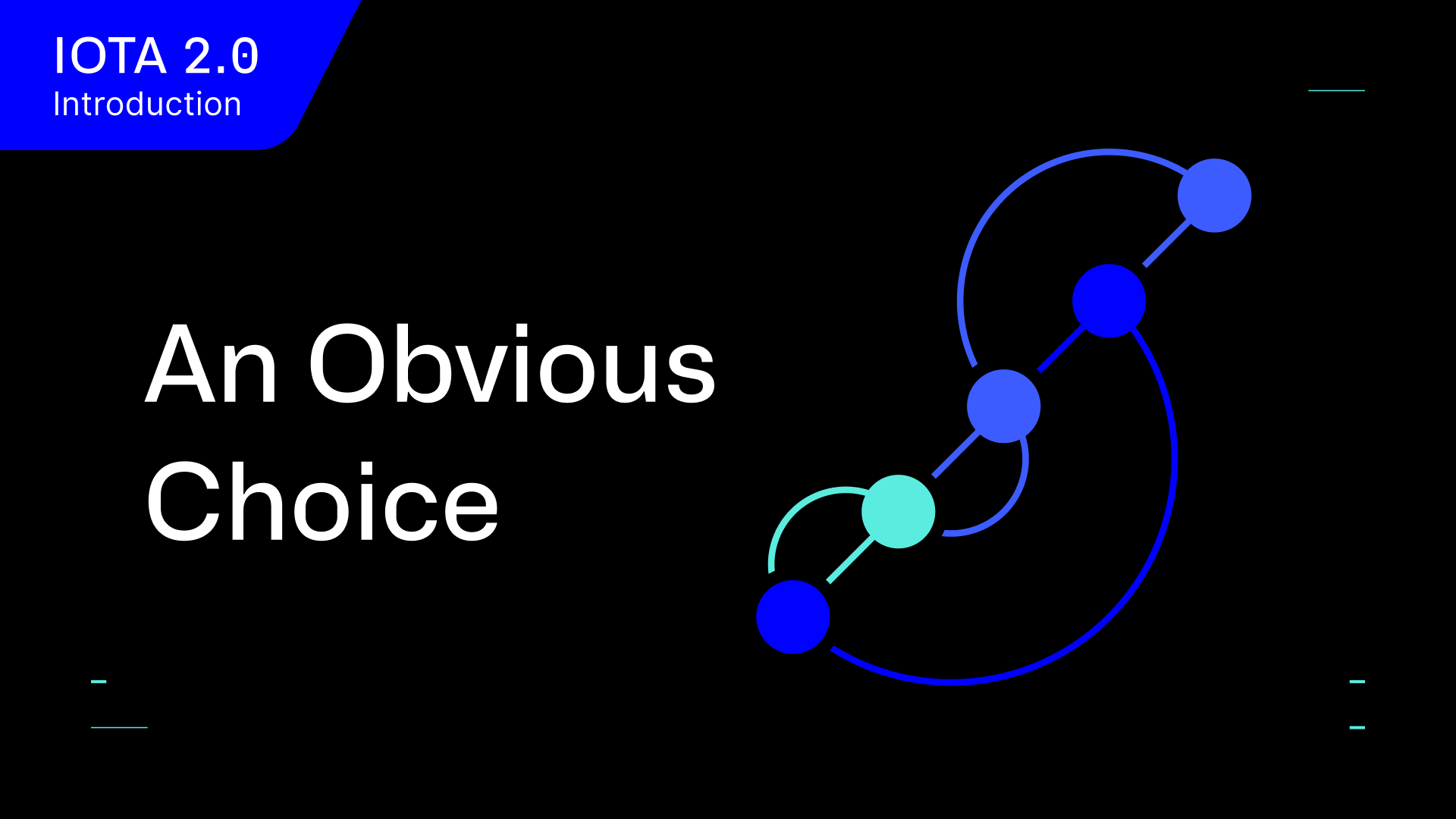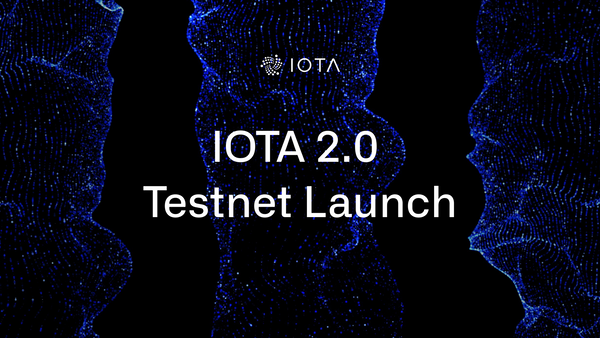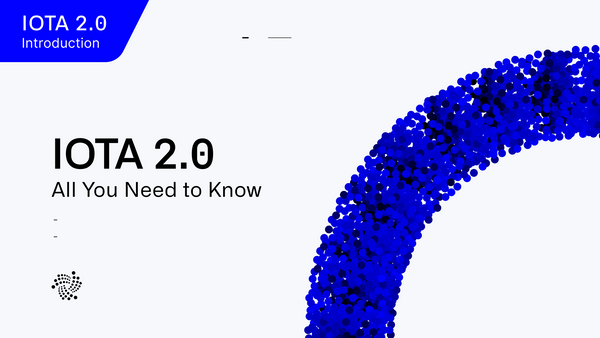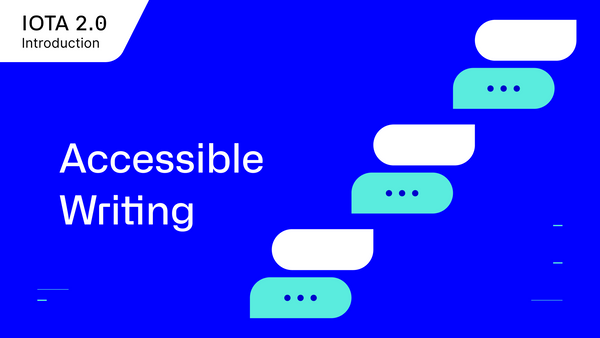An Obvious Choice: Why DAGs Over Blockchains?
IOTA 2.0 Introduction Part 10
TL;DR:
The article discusses blockchain technology limitations and how Directed Acyclic Graph helps IOTA 2.0 overcome these challenges. While blockchain's Proof of Work mechanism has flaws like high fees and slow processing, DAG benefits enable parallel and stream processing, the elimination of middlemen, and the involvement of all users in consensus. DAGs’ collaborative approach aligns with IOTA's vision of building the foundation for the future digital economy, empowering users, while achieving higher efficiency.
IOTA will always be one of the first associations that comes to mind when anyone thinks about Directed Acyclic Graphs (DAG). But the early adoption of the DAG data structure isn’t an arbitrary choice, nor the result of an urge to just have something different. DAG was and still is the only choice for IOTA to achieve its objective of Digital Autonomy for Everyone. This blog post explains why this is true; but first, for some context, let’s explain the fundamental problems that have plagued blockchain since its inception!
DLTs, Blockchains, and the Beginning of Everything
At the beginning of the Distributed Ledger Technology (DLT) adventure, the Bitcoin solution to updating the ledger was simple but effective. In a competitive race against time, a hard-to-solve cryptographic puzzle would decide who had the right to write the next block in the ledger and validate the ledger’s history, with the puzzle-solver earning rewards and fees.
This Proof of Work (PoW) design combines the consensus mechanism (which decides which information enters the shared ledger) and the access module (which decides who has the right to publish on the network) into a single element: the mining of new blocks.
Despite having the advantage of simplicity, PoW has its share of flaws. It incentivizes competition between users to have their transactions included in the ledger, which creates fees that exponentially increase with network demand. The work of unsuccessful miners is wasted and the “longest chain wins” approach leaves miners uncertain over whether or not their transactions will eventually be included in the accepted longest chain.
This leads to protocols requiring a long streak of blocks mined sequentially in a chain to guarantee acceptance for a block, which dramatically slows down the inclusion of information in the ledger.
From Proof of Work to Proof of Stake
These blockchain technology limitations inspired a quest to bypass the problems and scale blockchains to broader proportions. The most relevant innovation so far has been the development of Proof of Stake (PoS) blockchains, which avoid expensive computational work. In PoS systems, users only need to lock their tokens as collateral (in other words, they stake their tokens) to join a lottery to mine the next block.
While this approach improves energy consumption it does not improve the central problems of blockchain:
- Blocks need to be processed in sequence, so the validation process is concentrated in batches inside blocks, which creates wasteful idle periods for validators not making use of their hardware;
- Users are dependent on validators to publish their transactions in the network, which creates fee and value extraction problems.
Clearly, a change was required to align DLTs with the requirements of future protocols, and, while building on existing blockchain designs was always a possibility, the walls and bottlenecks that could be found would have been too detrimental to what the IOTA Foundation aims to achieve.
We want to build the base of the Web 3.0 economy, to empower digital autonomy and adopt a self-sustainable ecosystem. This means that adopting blockchain, with its obvious and fatal flaws, was never considered for the IOTA network. Instead, we built the Tangle, a different data architecture based on a DAG structure, which enables more creative solutions and higher efficiency in helping us achieve our vision.
The Benefits of DAG
The Tangle enables a network design where new blocks can approve multiple older blocks without having to form a singular chain. Instead of just having a singular chain of blocks at predefined intervals, blocks can be attached at any point in a graph of interconnected blocks, pointing in one direction, thereby creating a Directed Acyclic Graph, or DAG. “Acyclic” in this context means that it can not reference itself and form a circle. So instead of a single fishing line into which knots are made at predefined intervals, the IOTA Tangle can be seen as a fishing net in which knots can be made at any location, with the net becoming dynamically wider or narrower, based on demand.
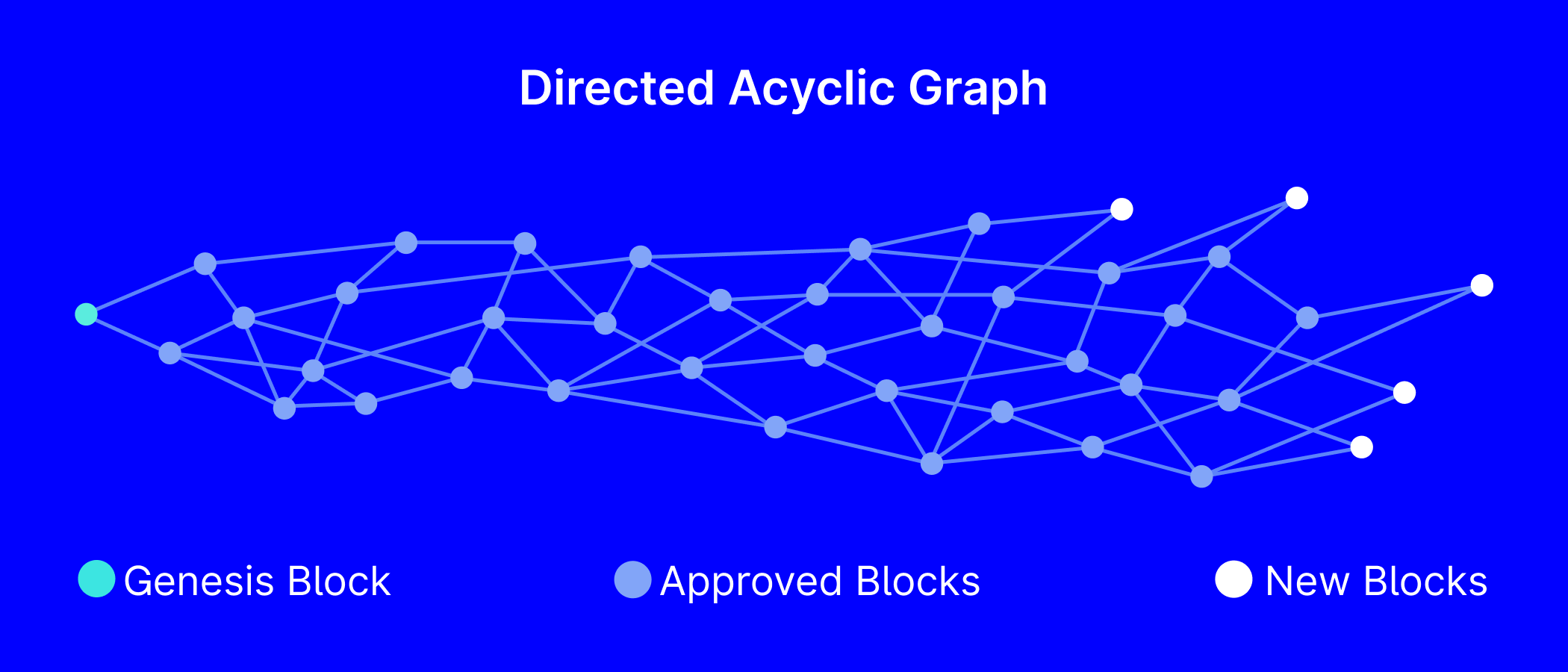
The Tangle removes many bottlenecks that hinder blockchains from being used on a meaningful scale. IOTA makes full use of the DAG benefits to avoid these bottlenecks:
- Parallel Processing: In DAG-based networks, blocks don’t need to be processed in order. This enables parallel processing, which means that the processing and validation of new transactions are evenly spread over time, reducing idle time for nodes. Furthermore, the lack of sequential dependence enables many transactions to be processed at the same time, which greatly increases the network's ability to handle heavy computations and congestion.
- Stream Processing: The validation process is always working, making better use of the validator’s hardware and allowing confirmations to be achieved much quicker than otherwise. The lack of idle time optimizes the use of network resources, achieving the best performance for any invested hardware.
- No middlemen: IOTA users can issue their own blocks with their own transactions without the need for mining or relying on value-extracting middlemen. The lack of extra actions in the issuance process makes every application much more efficient and faster, prevents censorship, and preserves the value of assets.
- All users contribute to consensus: Last but not least, IOTA’s use of a DAG enables more distributed validation systems, where all users can contribute to the consensus, whether by issuing blocks that create the approvals used to propagate opinions, by delegating their voting power to validators, or by issuing validation blocks that determine the final version of the ledger. Everyone plays a role and is rewarded for it.
The DAG-based design, therefore, follows a collaborative approach that makes the most of individual contributions, instead of a competitive approach requiring everyone to expend power but reward only a single actor.
Building on a DAG isn't an arbitrary choice: it allows us to build our vision, empower the community, offer our users autonomy, and have the capacity and performance to be the basis of the future digital economy.
Up next in this series of blog posts, we ask What Makes IOTA 2.0 Secure?
Join the conversation on X
🌐 An obvious choice: We adopted a #DAG architecture to overcome the limitations of blockchain technology. Read our latest blog post to understand how a DAGs’ collaborative approach aligns with #IOTA 2.0 objective of #DigitalAutonomy For Everyone. 🔗https://t.co/gCczOa3tgJ pic.twitter.com/PGsLjnsXlC
— IOTA (@iota) November 8, 2023
IOTA 2.0 Introduction
Part 1: Digital Autonomy for Everyone: The Future of IOTA
Part 2: Five Principles: The Fundamentals That Every DLT Needs
Part 3: Data Flow Explained: How Nodes Process Blocks
Part 4: Data Structures Explained: The Building Blocks that Make the Tangle
Part 5: Accounts, Tokens, Mana and Staking
Part 6: A New Consensus Model: Nakamoto Consensus on a DAG
Part 7: Confirming Blocks: How Validators Operate
Part 8: Congestion Control: Regulating Access in a Permissionless System
Part 9: Finality Explained: How Nodes Sync the Ledger
Part 10: An Obvious Choice: Why DAGs Over Blockchains?
Part 11: What Makes IOTA 2.0 Secure?
Part 12: Dynamic Availability: Protocol-Based Assurances
Part 13: Fair Tokenomics for all Token Holders
Part 14: UTXO vs Accounts: Merging the Best of Both Worlds
Part 15: No Mempool, No MEV: Protecting Users Against Value Extraction
Part 16: Accessible Writing: Lowering the Barriers to Entry

